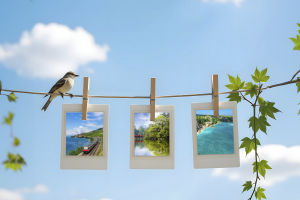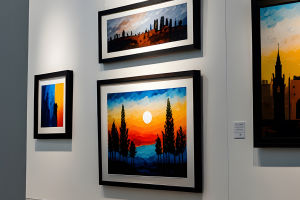Have you ever scrolled through social media and marveled at the stunning, professional-looking photos others post—only to find out they were shot on a phone? Good news: we can achieve that level of artistry too!
With today's advanced smartphone cameras, creating artistic photos is no longer reserved for those with expensive equipment. It's all about knowing some smart techniques and being a bit creative.
In this article, we'll explore how we can transform everyday moments into beautiful works of art—using nothing but our phones.
Understand the Basics of Composition
The first step to taking artistic photos is learning the basic principles of composition. We can think of these as the "rules of the visual road" that guide the viewer's eye:
• Rule of thirds: Instead of centering our subject, we can place it off-center along one-third lines. Many phone cameras have gridlines we can turn on to help.
• Leading lines: Use natural lines—like roads, fences, or shadows—to draw the viewer's gaze toward the subject.
• Framing: Find ways to frame our subject using windows, arches, or even tree branches for added depth.
Once we understand these tools, we can start bending the rules creatively!
Play with Light and Shadow
Light is the soul of photography. The way we use it can make or break an image.
• Golden hour: We can shoot during sunrise or sunset, when the sunlight is soft and golden. This gives a warm, dreamy feel to photos.
• Backlighting: Place the light source behind our subject to create silhouettes or dramatic rim lighting.
• Shadows: Strong shadows can add intrigue and a sense of mood to otherwise simple shots. We shouldn't be afraid to experiment with shadows and light contrast.
By becoming more aware of how light interacts with our environment, we open endless creative possibilities.
Focus on Details and Textures
Sometimes, the most artistic photos are not of grand landscapes but of small details. We can:
• Zoom in or get close to interesting textures—peeling paint, raindrops on leaves, or worn book pages.
• Use portrait mode or macro mode (if available) to blur the background and make textures pop.
This type of photography helps us appreciate beauty in the ordinary.
Use Color Creatively
Color plays a huge role in how we perceive an image's mood. Here are some ways we can use it:
• Complementary colors: Pair colors that are opposite on the color wheel (like blue and orange) for striking contrast.
• Monochromatic tones: Stick to variations of one color for a more subtle, cohesive look.
• Bold pops: Use a mostly neutral background with one splash of bright color to draw attention.
Paying attention to color transforms the emotional impact of our photos.
Edit Thoughtfully (But Not Too Much)
Editing helps us bring out the best in a photo—but subtlety is key. We can use free apps for basic edits:
• Adjust brightness and contrast to enhance mood
• Fine-tune color balance to correct tones
• Slightly sharpen for clarity
• Apply gentle filters for artistic effects
The goal is to enhance, not overwhelm. We should aim to maintain a natural look while adding our personal style.
Experiment with Creative Angles
Changing perspective can instantly make a shot more artistic. Instead of shooting everything at eye level, we can:
• Shoot from ground level for dramatic compositions
• Hold the phone above the subject for a flat lay effect
• Tilt the phone slightly for dynamic diagonal lines
Trying different angles forces us to see everyday scenes in new ways.
Keep Practicing and Stay Curious
The beauty of phone photography is that we can practice anytime, anywhere. The more we shoot, the more we develop an eye for artistry.
We can challenge ourselves with mini projects, like capturing reflections, photographing strangers' shoes, or documenting a single color throughout our day. Over time, these exercises help us build both technical skills and creative confidence.
Let's Start Creating!
Now that we've explored some practical ways to shoot artistic photos with our phones, it's time to get out there and experiment. Whether we're photographing morning coffee, street scenes, or nature, every moment holds artistic potential.
I'd love to know—what's the most creative phone photo you've ever taken? Or, which tip from this article will you try first? Let's share and inspire each other!


